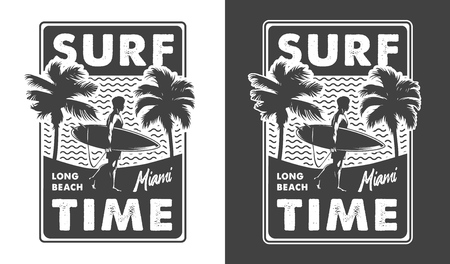Understanding Surf Fishing Conditions
When it comes to surf fishing along the U.S. coastlines, what you wear can make or break your day on the water. The right clothing choices depend heavily on a range of weather and environmental factors unique to each region and season. Coastal climates can be unpredictable—mornings might start off cool and foggy, only to turn hot and sunny by midday, especially in places like California or the Gulf Coast. Wind is another factor; strong gusts not only chill the air but also whip up salt spray, which can quickly soak unprotected clothing. Additionally, UV exposure is often higher near reflective surfaces like sand and water, increasing the risk of sunburn even on overcast days. In northern areas, such as the New England coast, early spring or late fall sessions may bring cold temps and icy waters, requiring extra layers for warmth and insulation. Meanwhile, southern states face high humidity and heat, demanding lightweight, breathable fabrics to keep anglers cool. Understanding these variables is key to selecting gear that keeps you comfortable, dry, and protected no matter where or when you hit the shore.
Essential Apparel for Comfort
When you’re spending hours casting from the shore, what you wear can make or break your surf fishing experience. Comfort starts with smart layering and choosing the right fabrics to handle shifting beach weather. Here’s a breakdown of essential apparel that keeps anglers cool, dry, and protected throughout long fishing sessions:
| Apparel Item | Recommended Material | Key Features |
|---|---|---|
| Base Layer | Moisture-wicking synthetics or merino wool | Pulls sweat away from skin; helps regulate body temperature in both hot and cool conditions |
| Shirts | Lightweight, UPF-rated polyester or nylon blends | Breathable; sun protection; quick-drying to keep you comfortable if you get splashed |
| Shorts/Pants | Nylon, polyester, or quick-dry blends | Pockets for gear; abrasion resistance; lightweight for easy movement; convertible options allow switching between shorts and pants as temperatures change |
Why Base Layers Matter
A solid base layer is crucial for managing sweat and keeping your core temperature steady. In cooler months, opt for long-sleeve base layers to trap warmth. During summer, short-sleeved or sleeveless moisture-wicking shirts prevent clamminess and overheating.
The Right Tops for the Shore
Long-sleeve fishing shirts are popular among American anglers thanks to their combination of UV protection and breathability. Many brands offer built-in ventilation panels and antimicrobial treatments to fight odor after a full day in the salt air.
Pants vs. Shorts: What Works Best?
Your choice depends on the season and local environment. Quick-dry shorts are great for hot days, but if you’re wading through brush or want extra sun protection, lightweight fishing pants or zip-off convertible styles offer more versatility. Look for designs with plenty of pockets so you can stash lures, pliers, or a phone within easy reach.
![]()
3. Weather-Appropriate Outerwear
When you’re surf fishing, the weather along the shore can change in a heartbeat. One minute you’re enjoying sunny skies, and the next you’re facing gusty winds or a sudden downpour. That’s why having the right outerwear is essential for both comfort and safety. A lightweight, waterproof jacket is a must-have for any angler hitting the beach. Look for options with adjustable hoods and sealed seams to keep you dry during unexpected rain showers. On chillier mornings or windy afternoons, a windbreaker provides just enough insulation without making you overheat. Breathable fabrics are key—they’ll help wick away sweat while keeping out cold air and ocean spray. If you’re fishing in areas known for unpredictable storms, consider packing a compact rain poncho or shell that can easily be stowed in your tackle bag. Don’t forget about layering: a fleece pullover or moisture-wicking hoodie under your jacket adds warmth when temperatures drop but can be removed as things heat up. Investing in quality outerwear means you’ll be prepared for whatever Mother Nature throws your way, letting you focus on reeling in the big catch instead of worrying about the weather.
4. Footwear for the Surf
Choosing the right footwear is essential when surf fishing along American shores, as it directly affects your safety, comfort, and performance. The shoreline can be slippery with rocks, shells, and seaweed, not to mention unpredictable waves and shifting sands. Whether youre wading into the surf or walking long stretches of beach, you need shoes that provide excellent traction, protection from sharp objects, and comfort for hours on your feet.
Top Footwear Options for Surf Fishing
| Type | Best For | Main Benefits |
|---|---|---|
| Neoprene Wading Boots | Wading in shallow surf, rocky beaches | Superior grip, protects against sharp rocks and shells, quick-drying |
| Water Shoes | Sandy beaches, warm climates | Lightweight, breathable, easy to rinse off sand |
| Sandals (with heel straps) | Casual shore fishing | Open design for drainage, secure fit prevents slipping off |
| Knee-High Rubber Boots | Muddy or marshy areas | Total water protection, keeps feet dry in deeper water |
Tips for Choosing Surf Fishing Footwear
- Traction: Look for soles with aggressive tread patterns designed to grip wet rocks and sand.
- Protection: Closed-toe designs shield you from hidden hazards like shells or debris beneath the waters surface.
- Comfort: Opt for cushioned insoles and lightweight materials to reduce fatigue during long sessions.
Cultural Tip: Flip-Flops Aren’t Enough!
While flip-flops are popular on American beaches for their convenience, they’re not suitable for surf fishing due to lack of support and protection. Invest in proper footwear to avoid painful cuts or slips—your feet will thank you after a full day on the shore.
5. Sun Protection and Accessories
When surf fishing, spending hours exposed to the sun can quickly lead to painful sunburns and long-term skin damage. Protecting yourself from harmful UV rays is just as important as choosing the right rod or bait. Here are some essential accessories and clothing items every angler should consider for optimal sun protection:
Wide-Brimmed Hats
A wide-brimmed hat is a must-have for any surf fisherman. Unlike baseball caps, wide brims provide shade for your face, ears, and neck—areas that are often most vulnerable to sunburn. Look for hats made from lightweight, breathable materials with moisture-wicking sweatbands for added comfort.
Sunglasses with UV Protection
Don’t overlook the importance of quality sunglasses. Polarized sunglasses not only reduce glare off the water, making it easier to spot fish, but they also protect your eyes from harmful UVA and UVB rays. Opt for wraparound styles for maximum coverage and always check that your lenses offer 100% UV protection.
UPF-Rated Clothing
UPF-rated clothing is designed specifically to block ultraviolet rays. Long-sleeve shirts, pants, and even neck gaiters made from UPF 30+ or higher fabrics can shield large portions of your body from the sun while remaining lightweight and breathable. Many brands offer quick-drying options that double as moisture control when you get splashed by waves.
Other Sun-Smart Accessories
- Buffs or Neck Gaiters: These versatile pieces can be worn around the neck or pulled up over the face for extra protection.
- Sunscreen: Apply broad-spectrum SPF 30 or higher to exposed skin areas, especially hands, wrists, and ankles.
- Fingerless Gloves: Consider gloves with UPF protection if you’ll be handling fish or gear in direct sunlight for extended periods.
Stay Ahead of the Sun
Dressing smartly and accessorizing with sun protection gear lets you enjoy longer sessions on the shore without worrying about sun damage. Making these accessories part of your regular surf fishing routine ensures a safer and more comfortable experience every time you hit the beach.
6. Staying Safe from Bugs and Marine Life
When surf fishing along America’s coastlines, you’re not just dealing with sun and salt—you’re also sharing the shore with insects and marine life that can pose risks to your comfort and safety. To make sure your fishing trip isn’t cut short by bug bites or unexpected stings, it’s important to choose your clothing and gear wisely.
Protective Clothing for Insects
Mosquitoes, sand fleas, and biting flies are common nuisances on many U.S. beaches, especially during the warmer months. Lightweight, long-sleeved shirts and pants made from breathable, quick-drying fabrics help minimize exposed skin without overheating you. Consider clothing treated with permethrin, a safe insect-repellent commonly used in outdoor apparel. Tuck your pant legs into your socks or boots for extra protection if bugs are particularly bad.
Gear to Prevent Marine Hazards
While wading in the surf, marine creatures like jellyfish, stingrays, and even crabs can deliver painful stings or pinches. Neoprene or rubber wading boots provide a sturdy barrier between your feet and hidden hazards in the sand or shallows. Rash guards not only protect against sunburn but also offer an extra layer of defense against jellyfish tentacles.
Additional Safety Tips
Always apply a long-lasting, water-resistant insect repellent to any exposed skin, following the label directions carefully. Check local beach advisories for jellyfish blooms or other marine warnings before heading out. If you have allergies to bites or stings, carry an EpiPen or antihistamines as needed.
By suiting up with the right gear and taking simple precautions, you can focus on enjoying your time surf fishing—without worrying about bugs or bites ruining your day on the American shoreline.
7. Packing Tips and Local Insights
When you’re gearing up for a day of surf fishing, packing efficiently can make all the difference between an enjoyable outing and a frustrating one. Start by making a checklist of essential clothing and gear: lightweight, moisture-wicking layers, a brimmed hat, UV-protective sunglasses, waterproof waders or quick-dry pants, and comfortable footwear suitable for sandy or rocky shores. Don’t forget extras like a windbreaker, rain jacket, and extra socks in case you get wet.
Packing Smart for Surf Fishing
Opt for a weatherproof backpack or tackle bag with multiple compartments. Organize your items so that the things you’ll need most often—like sunscreen, pliers, or water—are easy to access. Use resealable plastic bags to keep electronics and valuables dry. Bring a small towel or microfiber cloth to wipe off sand or water from your hands before handling your gear.
Local Advice Across the U.S.
Surf fishing conditions vary greatly depending on location. On the East Coast, local anglers recommend breathable long-sleeve shirts to ward off biting flies and sunburn during humid summer days, while rubber boots are essential during cooler months. In California, layering is key because mornings can be chilly but afternoons warm up quickly; locals swear by packable windbreakers and slip-on sandals for walking over hot sand. Down in the Gulf states, lightweight clothing that dries fast is a must due to high humidity, and anglers often suggest bringing extra bandanas to soak in cold water as a portable cooling method. Wherever you go, always check local regulations—some beaches require specific types of footwear or restrict certain gear.
Keep It Light—But Be Prepared
Remember: less is more when hauling your kit down to the beach. Stick with versatile clothing options that can handle sudden weather changes. If you’re new to a particular area, don’t hesitate to chat with local anglers—they’re usually happy to share what works best for their shoreline conditions. With smart packing and region-specific know-how, you’ll stay comfortable and protected no matter where you cast your line.


